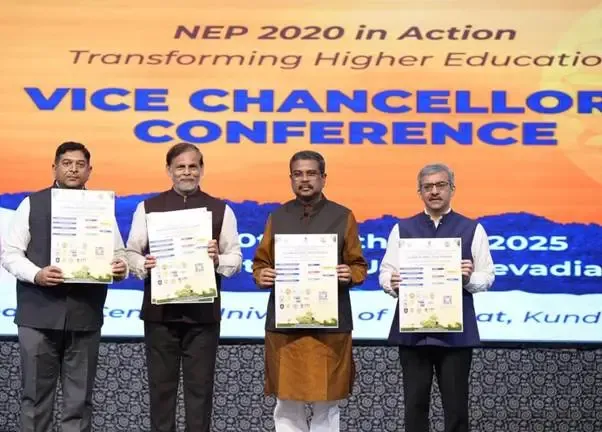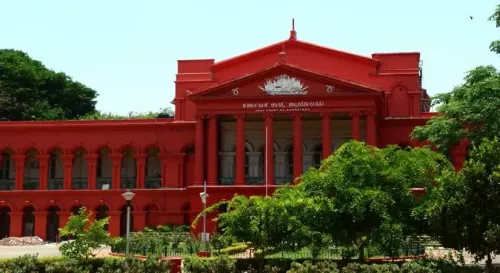How is Dharmendra Pradhan Inspiring Central Universities to Boost Research?

Synopsis
Key Takeaways
- Central universities are pivotal in enhancing research and innovation.
- NEP 2020 focuses on inclusivity and global competitiveness.
- Women’s participation in higher education has increased significantly.
- Technology integration is advancing through platforms like Swayam.
- The Academic Bank of Credits supports student-centric learning.
Kevadia (Gujarat), July 11 (NationPress) The Union Minister of Education, Dharmendra Pradhan, emphasized the pivotal role of central universities in enhancing the research and innovation ecosystem, fostering faculty development, and strengthening institutional governance during a recent conference for Vice Chancellors.
He commended the vision and commitment of the Vice Chancellors to nurture research talent and transform these institutions into vibrant centers of ideas, research, innovation, and entrepreneurship.
In an insightful post on X, Pradhan shared reflections on the significant contributions of central universities to research and innovation.
The Union Minister of State for Education, Sukanta Majumdar, remarked that the vision of Sardar Patel is foundational to the National Education Policy (NEP) 2020, which is a forward-thinking reform designed to enhance the global competitiveness of Indian education while remaining anchored in Indian values.
While addressing senior officials from the Ministry of Education and Vice Chancellors, he highlighted the remarkable growth in women’s participation in higher education, noting that female enrolment surged from 1.57 crore in 2014-15 to 2.07 crore in 2021-22, representing a 32 percent increase.
Majumdar showcased the achievements of NEP 2020, pointing out that the integration of technology in education has been significantly advanced through platforms like Swayam. Currently, over 295 universities allow students to earn up to 40 percent of their academic credits through Swayam courses.
This platform now issues nearly 9 lakh certificates annually, he added.
Moreover, the NEP 2020 advocates for multilingualism, as examinations such as JEE, NEET, and CUET are offered in 13 regional languages.
Thanks to the initiatives under NEP 2020, India achieved its best performance in the QS World University Rankings 2026, with a record 54 Indian institutions ranked, a five-fold increase since 2015.
The Academic Bank of Credits (ABC), a key feature of student-centric education, now boasts over 2.75 crore registered students and includes 1,667 higher education institutions, many of which are Central Universities.
Majumdar credited the visionary leadership of Prime Minister Narendra Modi for ensuring that the National Education Policy 2020 is not merely a reform but a renaissance in Indian education, empowering every learner to think globally while being grounded in India’s rich civilizational heritage.









